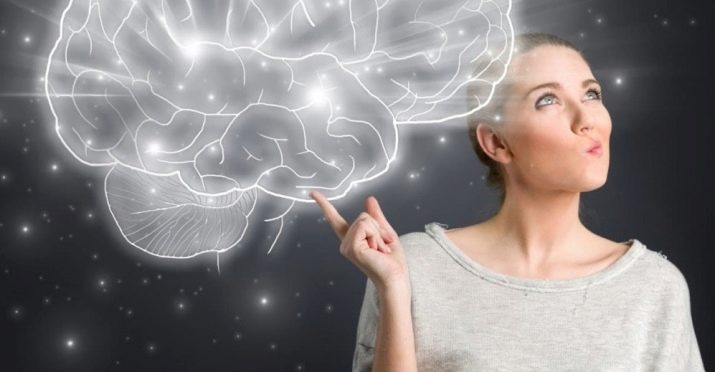Scientific thinking: basic features and principles

Scientific knowledge affects a person's worldview, understanding of life. The scientific and cognitive thought process is aimed at solving urgent problems, adopting constructive ideas, successfully overcoming difficulties, improving the quality of living conditions of each individual and society as a whole.

What it is?
The formation of scientific thinking activity is carried out in the process of knowing the world. Scientific thinking is a special type of cognitive process aimed at introducing objective information into human consciousness. The cognitive function reflects the essence of science.
The scientific style of thinking is aimed at developing reliable knowledge about the individual, society and nature. He recreates an objective picture of the world through analysis and synthesis.
All products of scientific thinking are grounded and collected in a single system. The classification of sciences by subject areas isolates social (social and humanitarian), natural, technical and mathematical sciences.
- Social sciences and humanities are aimed at obtaining knowledge about society and people. History and jurisprudence permeate all areas of public life. General knowledge about society is recorded in philosophy and sociology. Anthropology, aesthetics, ethics, philology, psychology, political science, cultural studies, economics reveal a specific area of the public sphere. Scientific thinking in the humanities explores human thoughts, motives, intentions, and personal values.
- Natural sciences involve the study of nature... Biology, chemistry, geography, geology, ecology, physics, astronomy equip people with new knowledge that will improve the quality of life.For example, in the medical industry, scientific discoveries are driving the recovery of patients with previously thought incurable diseases. Environmental scientists study water bodies and the environment, warn the population about the danger of their pollution.
- To technical sciences include mechanics, robotics, computer science, agronomy, architecture, which accelerate scientific and technological progress. Many technical sciences are designed to automate the production of enterprises, supplying them with the latest technologies. In the modern world, robots, new types of energy, ultrasonic processing methods, lasers in technology are successfully used.
- Mathematical theories provide all other sciences with formal linguistic means. Calculations, measurements, descriptions of the shape of objects are used to find the general laws of nature. Their structural relationship is observed. Mathematical models are used in the scientific thought process in the study of most sciences.

All sciences periodically intersect. In scientific research, thinking is aimed at studying information, the laws of specific processes and at analyzing, identifying regular, recurring phenomena in them.
An individual with scientific thinking has flexibility, independence. He objectively perceives what is happening in the world around him, willingly receives basic knowledge, assimilates new information, and is ready for any changes.
Peculiarities
Scientific thinking is fundamental. Unlike ordinary mental activity, it is characterized by universality, rationality, expediency, a high level of generalization of knowledge, the ability to formulate problems and build hypotheses, logical consistency and evidence, the desire for objectivity and reliability of the information received, verification of facts using arguments, the development of the conceptual apparatus.
The whole world of science is presented in the form of concepts and terms. A methodology is an essential part of the overall process. This type of mental activity involves continuity in the use of previously accumulated knowledge and many new reliable ideas. He performs cognitive, ideological, activity, cultural and social functions.

In psychology, the main features of the scientific thought process are distinguished.
Objectivity
With a scientific approach to the study of an object or phenomenon, there is a complete detachment from the subjective perception of the world. While reading fiction, a person feels the author's subjective view of phenomena and facts. The scientific treatise reflects only the facts obtained through careful objective research. There is no personal information about the scientist.

Consistency
For many centuries, people have collected all kinds of descriptions and explanations of various facts and phenomena. Over time, their ordering has led to the emergence of certain concepts and terms.
The existing system of theoretical data is a description of information obtained as a result of scientific research.
Validity
Scientific thinking implies the theoretical substantiation of principles and laws. Some of them for a long time remain at the level of assumptions and predictions, which, for some reason, do not yet have an evidence base, but in the future scientists will substantiate their guesses. And they will be scientifically proven or disproved. The repository of proven various theories and hypotheses contains many arguments confirming their objectivity.
Striving for the future
Scientific thinking is directed towards the future. For science, research results are of great importance not only for the current period of time, but also for their improvement, transformation into perspectives.
It is important for scientists to determine the laws and patterns of the development of phenomena to bring benefit to humanity in later life.This kind of thinking makes it possible to construct the future from the individual details that exist in the present.
Science isolates objectively correct fragments, parts, forms that will be useful to the coming generation.

Conceptuality
The natural-scientific approach to obtaining knowledge to consolidate theorems, patterns of various concepts obliges researchers to turn to formulas, symbols and other signs. The specific sign system is constantly being improved, corrected, supplemented throughout the entire period of the existence of science.
Mindfulness
The implementation of observation and control over the study of objects and phenomena, their connections with each other testifies to the conscious application of scientific methods by scientists.
Experimental approach
Theories are built on the basis of the experiments carried out. The scientific thought process makes it possible to use the results obtained to collect the evidence base for a huge number of investigated objects. In the course of experiments, specific concepts are formed, certain conclusions are drawn.

Principles
- The main principle of the scientific act of thinking is the presence of an experiment. Compared to empirical thinking, the scientific approach implies the extension of experimental results to a very wide range of information. Thanks to this, scientists are able to draw more different conclusions.
- The second principle testifies to the desire of scientists for objectivity and detachment. The empirical approach implies the direct participation of the individual in the experiment, taking into account the subsequent evaluative opinion. In order to avoid accidental or deliberate distortion of the conclusions obtained during the experiment, in the scientific thought process, observation is carried out from the outside.
- The third important principle is to systematize the information obtained in order to build a theory. The empirical approach does not imply a theoretical synthesis of knowledge; therefore, all data are considered separately from each other. The scientific approach sees the relationship between phenomena with their further grouping and classification.

Methods
Scientific thinking seeks to apply certain techniques of the cognitive process.
The scientific method is precise, rigorous and objective.
It allows you to turn an objective law into a rule of action for a researcher. The universal ways of such cognition are analysis and synthesis, deduction and induction, modeling, analogy, abstraction and idealization.
Analysis assumes the dismemberment of the whole into its component parts, synthesis - connection of parts into a single whole. At deduction proof is derived from one or more valid statements based on the laws of logic. At induction individual facts lead to a general situation. Method modeling involves recreating the characteristics of an object using a specially created other model. This method is used in case of difficulties arising during the study of the object itself.
Abstraction consists in mentally abstraction from some properties of phenomena and relations between them, highlighting some of their qualities. The results of abstraction can be various categories and concepts. Idealization is a thought process associated with the formation of some abstract concepts that are not always marketable in reality.
Scientific research methods include measurement, comparison, description, systematization and classification. In the thinking activity associated with science, empirical and theoretical methods are widespread.

Empirical
Scientific methods and empirical methods of knowledge involve conducting experiments to obtain certain information. They rely on experiment and observation.To carry out the experiment, special conditions are created, obstacles to it are eliminated, and appropriate technical devices are used. The study of phenomena and objects takes place through the influence of the subject of cognition on the object of research. When observed, there is no such effect.
For an organized and productive understanding of the material under study it is possible to use devices and tools.
Empirical methods are based solely on empirical data. With a scientific approach, empirically obtained information is necessarily confirmed or refuted by a theoretical interpretation based on specific premises.

Theoretical
All information obtained experimentally, scientists record in the form of a theory. Its structure includes fundamental concepts, principles, laws, axioms, value factors.
Methodology and logic are used to construct a theory. Theoretical knowledge is based on one of the forms: theory, hypothesis, problem and law.
The theoretical approach includes formalization and mathematization. In the first method, scientific information is manifested through the signs of a specially created language. The second method involves the introduction of mathematical achievements into the studied area of knowledge.
Historical method provides a description of the process taking into account its unique features. Logical method involves the reconstruction of a system of abstractions in theoretical form. All objects are presented at different stages of their development, in other words, their entire historical path is recorded. The logical method is closely related to history, which illuminates the stages of the development of events in their specific forms of manifestation, observing their chronology. The unity of all methods used in scientific thinking ensures further scientific and technological progress.









